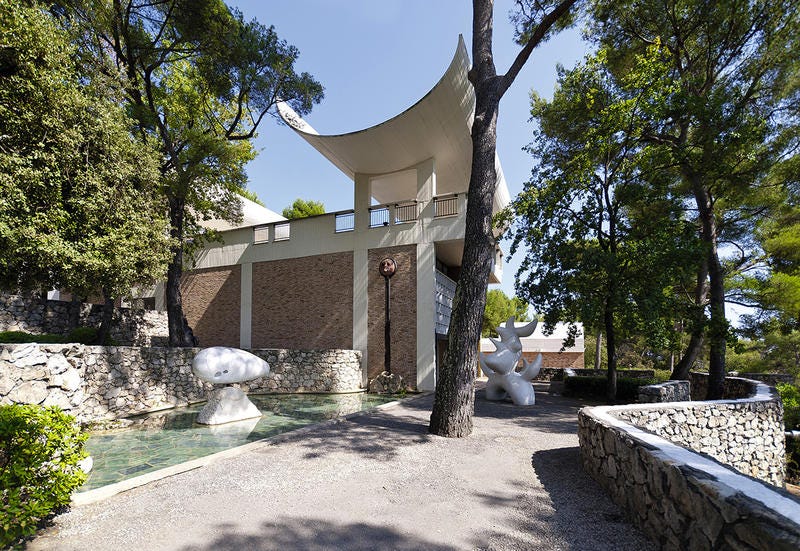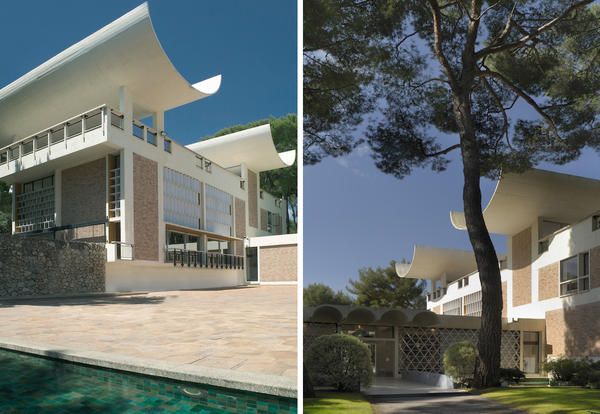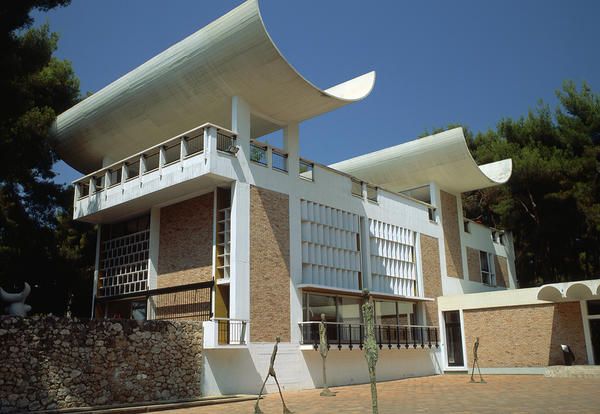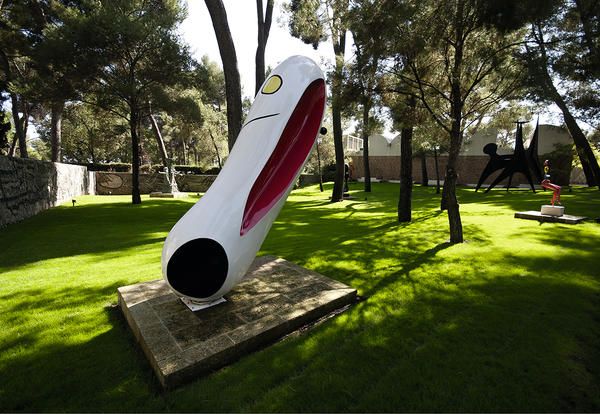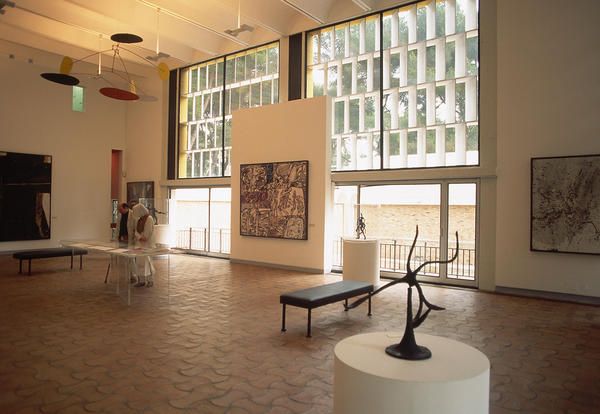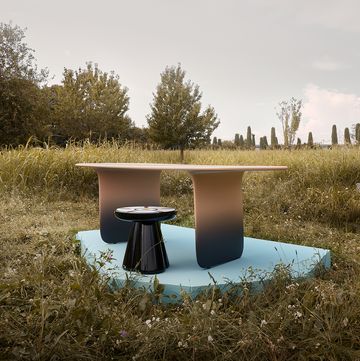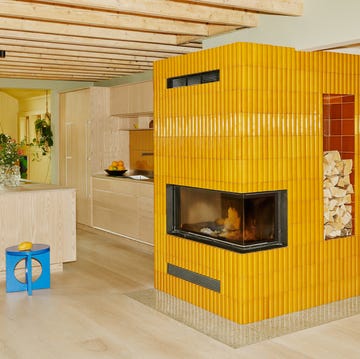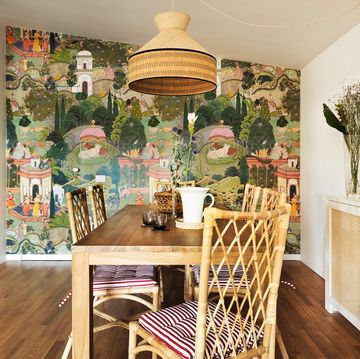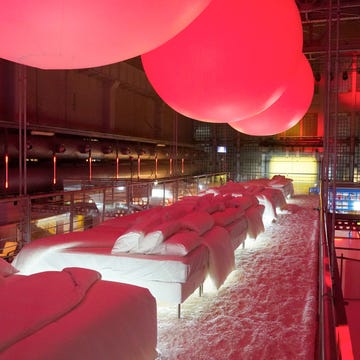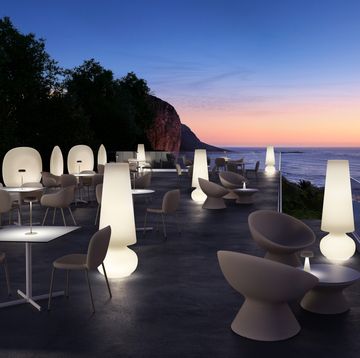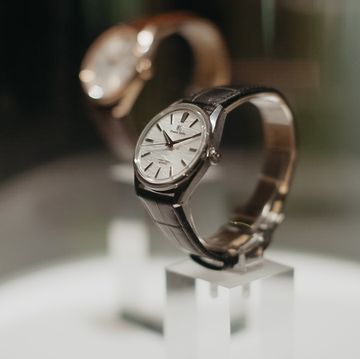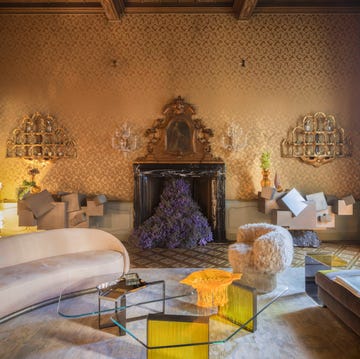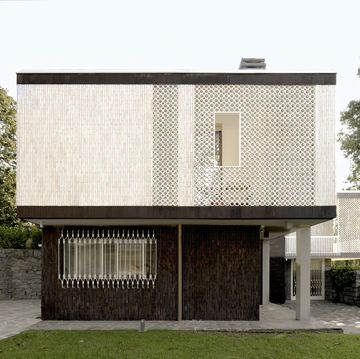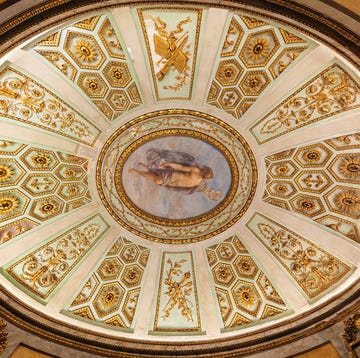Confirming a dedicated interest in great architecture, Louis Vuitton reveals the latest prestigious location for the Cruise 2019 runway show. Catwalks and spotlights will soon hit the Maeght Foundation in Saint-Paul de Vence in the south of France. No stranger to fame itself, the foundation is among the most important modern art gallery’s in Europe and a Provençal mecca for 20th century art aficionados.
The Fondation Marguerite et Aimé Maeght, home to a permanent collection of works by Georges Braque, Marc Chagall, Alberto Giacometti, and Jean Mirò, is also a 1950’s modernist masterpiece designed by Catalan Josep Lluís Sert on commission from the distinguished couple Marguerite and Aimé Maeght.
Louis Vuitton continues to unfurl creativity, and after the sumptuous scenography of the Bob & Dolores Hope Estate in Palm Springs, the Mac Niteroi in Brazil, and the Miho Museum in Japan, the next runway show is scheduled for May 28th, 2018 here in southern France.
It’s hard not to think about the night it was inaugurated back in 1964, but perhaps it’s better to start from the beginning…
Saint-Paul-de-Vence is a small town with fewer than 4 thousand inhabitants in the Maritime Alps, just 40 minutes from Nice. With the help of the Fondation Maeght, it’s often included among the villages to visit in the French Riviera and in Provence.
Declared as a “free zone” from Nazi occupation during the Second World War, southern France welcomed hoards of artists and intellectuals — among them, Aimé e Marguerite Maeght. Aimé, at the time, was a simple lithographer, a job he managed to obtain as an orphan of war. Passionate about poetry, jazz, and painting, he had already opened a small gallery in the back of his first graphic studio, where he met Pierre Bonnard and Henry Matisse.
After the war had come to an end, Maeght was convinced the time was right, and so he took the risk and inaugurated his Parisian gallery in Rue Teheran. He couldn’t have been more right. Beyond Bonnard and Matisse, the art dealer began exhibiting the works of Braque, Chagall, Miró, Léger, and Calder — the same artists hanging around Provence’s Colombe d’Or hotel.
Eight years later, in 1953, the couple was struck with a personal tragedy: the death of their 11 year old son Bernard from Leukemia. It didn’t take long for the two to head back south to St. Paul de Vence, where to console them, were friends and artists like the painter and sculptor Georges Braque.
In the words of Aimé Maeght, “He met me in St. Paul, a month after the death of my child, I was incredibly desperate. He said to me: ‘if you’re so keen to do something beyond buying and selling work, do something here, something without a fixed purpose, that lets us artists exhibit sculptures and painting in the best light and spaces possible. Do it, and I’ll help.’” (Véronique Bouruet-Aubertot, in the n°623 of Connaissance des Arts, April 2014)
And the Maeght’s did just that. After a trip to the United States to visit the big foundations (Barnes, Phillips, Guggenheim), they gave the project to Catalan architect and urbanist, Josep Lluís Sert.
Sert, born in 1902, had already worked for Le Corbusier and developed a personal style during the 1930’s with influences from Bauhaus and Gaudì — rationalist, fresh, Mediterranean. White spaces and bountiful light characterize his work.
When Maeght offered him the job, Sert had left 15 years of Francoist Spain for a position at Harvard University as the head of the Graduate School of Design — a title he took from none other than Walter Gropius.
Aimé asked Sert not for a museum, but rather for a place where artists and intellectuals might display their work, and even come together to share ideas. Sert collaborated with the great painters and sculptors and their vision, which would have a great influence on the final result. What came to be was a Rationalist structure avoiding Brutalist tendencies with a southern, humanistic warmth.
Today, 200 thousand annual visitors enter the Maeght Foundation through the “Sculpture Garden”, a green oasis featuring Fernand Léger’s ceramics, Pol Bury’s fountain, and Alexander Calder’s monumental sculpture, among others.
Meanwhile, the unforgettable Labyrinth of Joan Mirò, rich with ceramics and bronzes, leads visitors inside along with figures depicting an egg, a lizard, and a fork.
The building is completely integrated in the surrounding nature and the roofing is said to “sometimes evoke a sun disk, sometimes the horns of a bull”. Either way, the architectural complex is organized like a small village: the “Corte Giacometti”, a small agora, takes the name of the sculptor of Homme qui marche; the library’s external wall is adorned with Chagall’s Les Amoureux; the chapel of St. Bernard features the stained glass windows of Braque and Ubaco; and in an internal patio, the mosaic pool holds George Braque’s Les poissons.
The Maeght Foundation today is home to over 10,000 works and among them are 62 sculptures from Alberto Giacometti, 150 from Jean Miró, and La vie, the largest painting in the world by Marc Chagall.
Sert was able to offer infinite possibilities to roam the 850 square meters of surface area, through zig-zagging paths without ever repeating the environments. Natural light is dimmed and indirect, taking advantage of the sun’s trajectory.
That night at the Foundation’s inauguration, July 28th, 1964, was said to be absolutely perfect. Yves Montand sang a song written by Prévert, but the star of the show was none other than the queen of jazz, Ella Fitzgerald. The then Minister of Cultural Affairs, writer André Malraux, inaugurated the space with a memorable speech. And amidst all the elegance, “Alberto (Giacometti) didn’t want to change jackets, always scruffy, with a lit pipe in the corner of his mouth”, just as Francesca Giuliana told Repubblica.
That magical night the Maeght Foundation became one of the most important modern art gallery’s in the world. And Marguerite e Aimé Maeght were consecrated among the greatest patrons of all time.
